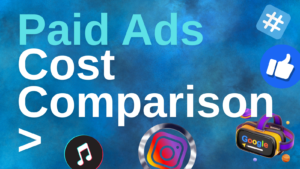Search Engine Optimization (SEO) is not just a single strategy or a one-time setup; it’s a continuous process of understanding and adapting to search engine algorithms, user behavior, and technological advancements. As the digital landscape evolves, so do the rules and practices of SEO, making it a dynamic and challenging field that requires constant learning and adaptation. The goal is clear: to ensure that your website not only ranks higher in search engine results pages (SERPs) but also delivers a user experience that converts visitors into customers or followers.
The journey of SEO begins with understanding the core components that search engines consider when ranking websites. These include the relevance and quality of content, the structure and accessibility of the website, user engagement and experience, and the number and quality of inbound links. Each of these components requires a unique set of strategies and techniques, from keyword research and content creation to link building and technical optimization. By mastering these areas, businesses and content creators can significantly improve their online visibility and attract more targeted traffic to their sites.
SEO is not just about appeasing search engines. At its heart, SEO is about understanding and meeting the needs of your audience. It’s about creating valuable, relevant content that answers the questions and solves the problems of your target audience. It’s about making your website easy to navigate and ensuring that it loads quickly and performs well on all devices. By focusing on the user experience, you not only improve your rankings in search engines but also build trust and credibility with your audience.
In the realm of SEO, content reigns supreme. Quality content is what attracts visitors to your website and keeps them engaged. But creating content that ranks well and meets the needs of your audience requires a deep understanding of keyword research, search intent, and content optimization. It’s about finding the right balance between using keywords that drive traffic and creating content that provides value. It’s also about staying up-to-date with the latest content trends and understanding how changes in search engine algorithms might affect your content strategy.
Technical SEO is another critical component of a successful SEO strategy. This involves optimizing the infrastructure of your website so that search engines can easily crawl and index your content. It includes improving the speed and performance of your site, ensuring that it’s mobile-friendly, and fixing any crawl errors or broken links. Technical SEO might not be as visible as other aspects of SEO, but it’s just as important. A technically sound website not only ranks better in search engines but also provides a better experience for visitors, increasing the likelihood that they’ll stay on your site longer and convert.
Link building is yet another vital aspect of SEO. Inbound links from reputable websites signal to search engines that your content is valuable and trustworthy. But effective link building is about more than just getting as many links as possible. It’s about getting the right links from the right websites. This means creating high-quality content that others want to link to and engaging in ethical outreach strategies that build relationships with other content creators and websites in your industry.
As the digital world continues to evolve, so too does SEO. What worked yesterday might not work today, and what works today might not work tomorrow. This is why staying informed about the latest trends, algorithm updates, and best practices in SEO is crucial. It’s also why SEO should be considered a long-term investment rather than a one-time effort. The businesses and content creators who succeed in SEO are those who are committed to continuously learning, experimenting, and adapting their strategies to stay ahead of the curve.
SEO is a complex and ever-evolving field that plays a critical role in digital marketing. It’s about much more than just ranking high in search engines; it’s about creating a website that delivers value to your audience and meets their needs. By understanding and implementing effective SEO strategies, businesses and content creators can significantly improve their online visibility, attract more targeted traffic, and achieve their digital marketing goals. Whether you’re just starting out in SEO or looking to improve your existing strategies, this comprehensive guide provides the insights and direction you need to succeed in the competitive world of SEO.
Understanding SEO – The Foundation of Digital Visibility
Understanding SEO goes beyond the mechanics of website optimization; it’s about comprehending the intricate dance between websites, search engines, and users. At its essence, SEO is about visibility and communication. It’s a language that websites use to communicate their content’s relevance and authority to search engines, which in turn communicate this to users through search rankings. This strategic process involves a deep dive into the psychology of your target audience, understanding the keywords they use, the content they seek, and the behaviors they exhibit while searching. It’s about aligning your website’s content, structure, and on-site metrics with the factors search engines deem important.
The technical side of SEO focuses on the mechanics of a website — its speed, architecture, and the cleanliness of its code — all of which contribute to how effectively search engines can crawl, interpret, and index the site’s content. This technical groundwork ensures that the site can be fully understood and appreciated by search engines, laying a solid foundation for all other SEO efforts.
On the marketing side, SEO is about content strategy, user engagement, and building an online presence that resonates with both users and search engines. It’s about creating content that fulfills the needs and answers the questions of your target audience, using the right language and structure. It’s also about promoting this content and your website through ethical link-building strategies and social media engagement, establishing authority and trust in your niche.
But SEO isn’t just a technical checklist or a marketing campaign; it’s a dynamic, ongoing strategy that requires constant monitoring and adaptation. Search engines continually update their algorithms to provide better results for users, which means the tactics that worked yesterday may not work today. Staying informed about the latest trends, understanding the implications of algorithm updates, and being willing to adapt your strategies are crucial for long-term SEO success.
SEO is fundamentally about the user experience. It’s not enough for a site to be visible; it must also be useful and enjoyable for the visitor. This means creating a website that’s not only informative and relevant but also easy to navigate, fast-loading, and accessible across all devices. A positive user experience leads to longer visit durations, lower bounce rates, and more conversions — all of which are positive signals to search engines and can lead to higher rankings.
Understanding SEO requires a holistic approach that combines technical know-how with creative marketing and a deep understanding of user behavior. It’s about building a website that serves the needs of your users and communicates its value effectively to search engines. By focusing on the foundation of digital visibility, you can craft a website that stands out in the crowded online space and attracts the quality and quantity of traffic you desire.
The Pillars of SEO – Content, Technical Proficiency, and User Experience
Content is King
The adage “Content is King” in SEO is about more than just filling pages with text; it’s about crafting meaningful, engaging, and valuable information that serves the needs and interests of your audience. Quality content is the magnet that attracts visitors to your website and keeps them there. It’s not just about sprinkling keywords throughout your text but about weaving a narrative that resonates with your audience, answers their questions, and provides solutions. This involves a deep understanding of your audience’s needs, preferences, and search behaviors, and creating content that is not only informative but also compelling and persuasive.
Content in SEO is not static; it’s dynamic and ever-evolving. It requires regular updates, revisions, and sometimes, complete overhauls to stay relevant and effective. This means keeping abreast of the latest industry trends, news, and updates, and reflecting these in your content. It also means continuously analyzing the performance of your content, understanding what works and what doesn’t, and making the necessary adjustments to improve its effectiveness.
Technical SEO
Technical SEO is akin to the foundations of a building. Just as a building needs a strong foundation to stand tall and firm, a website needs a solid technical base to perform well in search engine rankings. This involves optimizing your website’s infrastructure so that search engines can easily crawl, index, and render your content. It includes optimizing your site’s speed, ensuring it’s mobile-friendly, implementing a secure and accessible website architecture, and ensuring error-free coding and site structure.
Crawling and indexing are fundamental aspects of Technical SEO. Search engines use bots to crawl websites and understand their content and structure. If a site is not well-optimized for crawling, search engines might miss out on some of its content, which can negatively impact its rankings. Similarly, indexing is crucial because it’s the process by which search engines decide whether to include your content in their databases. By ensuring that your site is easily crawlable and indexable, you increase its visibility and ranking potential.
Rendering is another critical aspect of Technical SEO. It refers to how browsers display your website’s content. If your site’s content doesn’t render properly across different browsers and devices, it can lead to a poor user experience, which can negatively impact your rankings. Therefore, it’s important to ensure that your website’s design and coding are compatible with all major browsers and devices.
User Experience (UX)
User Experience (UX) in SEO is about creating a website that’s not only easy and enjoyable to use but also delivers value to its visitors. Google and other search engines have increasingly placed importance on UX as a ranking factor because they recognize that a good user experience keeps people on your site longer, reduces bounce rates, and increases conversions. This includes ensuring your website is easy to navigate, loads quickly, and is accessible to all users, including those with disabilities.
Mobile-friendliness is a critical aspect of UX. With the increasing prevalence of mobile devices, your website must perform well on smartphones and tablets, not just desktop computers. This means having a responsive design that adjusts to different screen sizes, optimizing images and other media for mobile, and ensuring that buttons and links are easy to click on a smaller screen.
Ease of use is another important element of UX. Your website should be intuitive and easy to navigate, with a clear and logical structure. Users should be able to find what they’re looking for without frustration or confusion. This includes having a well-organized menu, a clear hierarchy of content, and a search function that helps users find specific information quickly.
Site speed is also a crucial factor in UX. A slow-loading website can frustrate users and lead them to leave your site, which can increase your bounce rate and negatively impact your rankings. Therefore, it’s important to optimize your site’s speed by compressing images, minifying code, and using a reliable hosting service.
Crafting Your SEO Strategy
1. Keyword Research – The Start of SEO
Keyword research stands as the cornerstone of a successful SEO strategy, guiding every decision and action you take in optimizing your website. It’s a deep dive into the language and queries of your potential visitors, understanding not just the words they type into a search bar, but the intent and context behind those words. This research isn’t about chasing high volumes blindly; it’s about finding the sweet spot where relevance, search volume, and competitiveness intersect. It’s about understanding the nuances of long-tail keywords versus short-tail, the evolving trends in user search behavior, and how seasonal variations can affect search interest.
Advanced tools like Google Keyword Planner, Ahrefs, or SEMrush offer more than just lists of keywords; they provide insights into the performance, competition, and potential strategies for each term. They allow you to perform a detailed competitor analysis, understand keyword difficulty, and even uncover the questions your audience is asking. This level of detail transforms keyword research from a guessing game into a strategic tool, enabling you to craft content that speaks directly to the needs and interests of your audience.
2. On-Page SEO – Optimizing Your Content
On-page SEO is a multifaceted discipline that focuses on refining each element of your website to speak the language of search engines fluently. It’s about making your content discoverable and attractive not just to search engines, but to users. This involves a meticulous approach to structuring your content, using headings (H1, H2, H3) effectively to create a clear content hierarchy, and ensuring that your title tags and meta descriptions are both informative and enticing. Each page should be a blend of targeted keywords and natural, engaging language that serves the dual purpose of satisfying search algorithms and providing value to the reader.
But on-page SEO goes beyond text. It encompasses the optimization of images through alt tags that describe the image content, helping search engines understand and index your multimedia content. It’s about optimizing your URLs so they are concise and indicative of the content of the page, enhancing the user experience and contributing to better rankings. On-page SEO also means ensuring your website is accessible and inclusive, making content understandable and navigable for all users, including those with disabilities.
On-page SEO is not a set-it-and-forget-it task. It requires continuous monitoring and updating to ensure that content remains relevant and effective. This might involve updating outdated information, adding fresh content, or even revamping the structure of pages to improve user engagement and search engine performance. With each update, on-page SEO helps to build and maintain the relevance and authority of your website, making it a vital ongoing process in any SEO strategy.
3. Off-Page SEO – Building Your Site’s Reputation
Off-page SEO is essentially about building a website’s reputation and authority in the digital ecosystem. It extends beyond your website, involving the broader web community through link-building, social media strategies, and more. The core of off-page SEO is backlinks, akin to digital votes of confidence from other reputable websites. Each quality backlink serves as an endorsement, signaling to search engines that your content is valuable and trustworthy. However, not all backlinks are created equal. Links from high-authority, reputable sites have a much greater impact than those from lesser-known sites.
But off-page SEO isn’t just about links. It’s also about your brand’s presence and reputation across the web. Social media engagement, guest blogging, influencer marketing, and even reviews and mentions across forums and communities contribute to your site’s off-page SEO. These activities help increase your brand’s visibility and authority, driving traffic back to your site and improving your search rankings.
The strategy for off-page SEO involves a careful balance of outreach, networking, and content marketing. It requires building relationships with other website owners, creating content that’s genuinely worth linking to, and engaging with your audience across various platforms. It’s a long-term, ongoing effort that, when done right, can significantly boost your website’s authority and rankings.
4. Technical SEO – Ensuring Search Engines Can Crawl and Index Your Site
Technical SEO is the unsung hero of a website’s success in search rankings. It involves a series of backend optimizations that ensure search engines can effectively crawl, interpret, and index your website. This includes optimizing your site’s structure, ensuring efficient coding, improving site speed, and making sure your website is mobile-friendly.
One of the primary goals of technical SEO is to make your website easily accessible to search engine bots. This involves creating a clean, organized site structure with a well-implemented sitemap and efficient navigation. Robots.txt files play a crucial role here, guiding search engine crawlers on what parts of the site to crawl and what to ignore.
Site speed is another critical aspect of technical SEO. A fast-loading site provides a better user experience and is favored by search engines. Optimizing images, minifying CSS and JavaScript, and leveraging browser caching are all strategies used to improve site speed.
With the increasing importance of mobile browsing, having a mobile-responsive website is no longer optional. Technical SEO ensures that your site provides a seamless experience across all devices, an aspect that search engines heavily emphasize in their rankings.
Leveraging Page Ads for Enhanced SEO
In the realm of digital marketing, Page Ads stands as a beacon of innovation and efficiency. Users of Page Ads can order guest posting services, a critical component of any robust SEO strategy. Guest posting involves writing and publishing an article on someone else’s website or blog. It’s a great way to connect with new readers and get your name out. But it’s not just about getting your name out there; it’s also about providing useful, relevant content to your potential customers.
Moreover, Page Ads offers the Page Indexer tool, a powerful asset for indexing web pages and backlinks. Ensuring your pages and backlinks are indexed by search engines is crucial for visibility. The faster and more efficiently your content is indexed, the better your pages can perform in search engine results pages.
Page SERP is another tool under the Page Ads umbrella, offering advanced SEO analytics for websites. It provides detailed insights into how websites are performing in search engines, tracking data points related to website performance, including rankings for specific keywords and click-through rates.
Mastering SEO for Digital Success
SEO is an ongoing process that involves a lot of trial and error. It’s important to stay up to date with the latest trends and changes in SEO practices. Remember, the goal of SEO is not just to increase traffic but to increase the quality of traffic to your site. By understanding and implementing the strategies outlined in this guide, you can ensure that your site is not only visible in search engines but also provides a valuable and engaging experience for your users.
As digital marketing continuously advances, SEO steadfastly holds its ground as an essential and fundamental component. By leveraging tools like Page Ads, Page Indexer, and Page SERP, and by staying informed and adaptable, you can navigate the complexities of SEO and emerge with a stronger, more visible online presence. Whether you’re a small business owner, a content creator, or a seasoned marketer, mastering SEO is an essential step in your journey to digital success.
FAQs About SEO
1. What is SEO and why is it important?
SEO, or Search Engine Optimization, is the practice of increasing the quantity and quality of traffic to your website through organic search engine results. It’s important because it makes your website more visible, which means more traffic and more opportunities to convert prospects into customers.
2. How does SEO work?
SEO works by optimizing your site for the search engine that you want to rank for, whether it’s Google, Bing, Amazon, or another. This involves adding keywords to your website that your potential customers use when looking for your products or services, creating high-quality content, improving loading speed, making your site mobile-friendly, and more.
3. Can I do SEO on my own or do I need to hire an expert?
While it’s possible to learn and implement basic SEO strategies on your own, hiring an expert can be beneficial for more complex, competitive, or large-scale needs. SEO can be quite intricate and constantly evolves, so having someone who keeps up with the latest trends and updates can significantly impact your results.
4. How long does it take to see results from SEO?
SEO is often a long-term strategy. Typically, it can take 6-12 months to see significant changes in search rankings and traffic. However, this varies greatly depending on the competitiveness of your industry, the quality of your website, and the consistency and quality of your SEO efforts.
5. What are ‘keywords’ and how do I choose them?
Keywords are words or phrases that users type into search engines to find content. Choosing the right keywords involves understanding the terms your potential customers use when searching for your products or services. Tools like Google Keyword Planner, Ahrefs, or SEMrush can help identify these terms and their search volume.
6. What is the difference between on-page and off-page SEO?
On-page SEO refers to factors on your own website that you can optimize, such as content, navigation, and page speed. Off-page SEO refers to actions taken outside of your website to impact your rankings within search engine results pages, primarily through backlinks.
7. Are backlinks still important in SEO?
Yes, backlinks are a critical component of SEO. They serve as endorsements from other websites, indicating to search engines that your content is valuable and trustworthy. However, the quality of backlinks is more important than quantity; links from reputable, relevant sites have the most impact.
8. How do I know if my SEO efforts are working?
You can track your SEO success by monitoring changes in your search rankings, the amount of organic traffic your site receives, and your conversion rates. Tools like Google Analytics and Google Search Console can help provide this information.
9. What are some common SEO mistakes to avoid?
Common SEO mistakes include neglecting mobile optimization, using the wrong keywords, ignoring meta tags and descriptions, creating low-quality content, and participating in questionable link-building practices. Avoiding these pitfalls can significantly improve your SEO efforts.
10. How often should I update my SEO strategy?
SEO is an ongoing process due to constantly changing algorithms and market conditions. It’s recommended to review and update your SEO strategy regularly, at least quarterly, to ensure it aligns with current best practices and continues to drive desired results.





